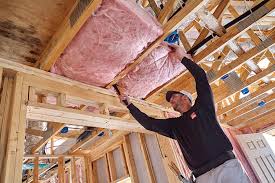When it comes to insulating your home, you want to make sure you choose the best insulation type for your specific needs. There are many insulation options available, and each has its own advantages and disadvantages. In this article, we will take a closer look at Polystyrene insulation, compare it to other insulation types, and help you decide if it is the right choice for your home.
Contents
What is Polystyrene Insulation?
Polystyrene insulation is a type of rigid foam insulation that is made from expanded or extruded polystyrene. It is often referred to as EPS (expanded polystyrene) or XPS (extruded polystyrene). Polystyrene insulation is known for its high insulating value and excellent moisture resistance, making it an ideal choice for both interior and exterior insulation applications.

Advantages of Polystyrene Insulation
One of the main advantages of Polystyrene insulation is its high insulating value. It has one of the highest R-values (a measure of thermal resistance) per inch of any insulation type, making it an excellent choice for homes in colder climates. Polystyrene insulation is also resistant to moisture, which helps prevent mold and mildew growth and keeps your home healthier.
Another advantage of Polystyrene insulation is its versatility. It can be used in a variety of applications, including walls, roofs, floors, and foundations. It is also available in both expanded and extruded forms, so you can choose the type that best suits your needs.
Disadvantages of Polystyrene Insulation
While Polystyrene insulation has many advantages, there are also some disadvantages to consider. One of the main disadvantages is its environmental impact. Polystyrene insulation is made from petroleum-based materials and is not biodegradable, which means it can take hundreds of years to decompose in a landfill. It also releases toxic chemicals when burned, so it is not a sustainable option for those concerned about the environment.
Another disadvantage of Polystyrene insulation is its flammability. While it is resistant to moisture, it is highly flammable and can release toxic fumes when burned. This makes it a potential fire hazard and may not be the best choice for homes in areas with high wildfire risk.
Comparison to Other Insulation Types
Now that we have discussed the advantages and disadvantages of Polystyrene insulation, let’s compare it to some other common insulation types:
Fiberglass Insulation – Fiberglass insulation is one of the most common insulation types used in residential construction. It is made from glass fibers and is available in batts, rolls, and loose-fill forms. While fiberglass insulation is affordable and easy to install, it is not as effective at insulating as Polystyrene insulation. It is also not resistant to moisture, which can lead to mold and mildew growth.
Cellulose Insulation – Cellulose insulation is made from recycled paper and is an environmentally friendly insulation option. It is available in loose-fill form and is a good choice for attics and wall cavities. However, cellulose insulation is not as effective at insulating as Polystyrene insulation and is not resistant to moisture.
Spray Foam Insulation – Spray foam insulation is a high-performance insulation option that is applied as a liquid and expands to fill gaps and crevices. It is very effective at insulating and is resistant to moisture, but it is also one of the most expensive insulation types available.



